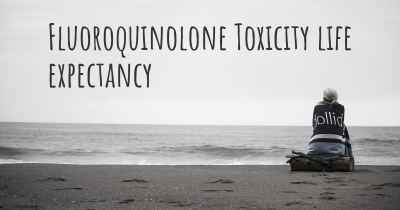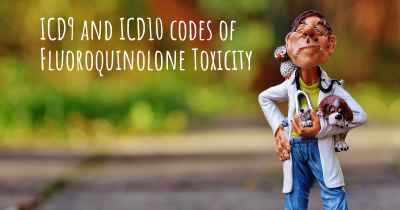What is the history of Fluoroquinolone Toxicity?
When was Fluoroquinolone Toxicity discovered? What is the story of this discovery? Was it coincidence or not?

History of Fluoroquinolone Toxicity
Fluoroquinolones are a class of antibiotics that have been widely used since the 1980s to treat various bacterial infections. They are known for their broad-spectrum activity and effectiveness against a wide range of bacteria. However, over the years, concerns have been raised about the potential for fluoroquinolones to cause serious side effects, including a condition known as fluoroquinolone toxicity.
Introduction of Fluoroquinolones
The first fluoroquinolone, nalidixic acid, was introduced in the 1960s. It was primarily used to treat urinary tract infections caused by susceptible bacteria. Nalidixic acid was later followed by the development of newer fluoroquinolones, such as ciprofloxacin, levofloxacin, and moxifloxacin, which had improved activity against a broader range of bacteria.
Initial Safety Profile
When fluoroquinolones were first introduced, they were generally considered safe and well-tolerated. Common side effects included gastrointestinal disturbances, such as nausea and diarrhea, as well as mild central nervous system effects. However, serious adverse reactions were rare, and the benefits of these antibiotics outweighed the risks for most patients.
Emergence of Fluoroquinolone Toxicity
In the late 1990s and early 2000s, reports began to emerge linking fluoroquinolones to a range of serious side effects. These included tendon ruptures, peripheral neuropathy, psychiatric disturbances, and even life-threatening conditions such as aortic aneurysms and aortic dissections. These adverse reactions were not well-documented in the early clinical trials of fluoroquinolones, leading to concerns about the safety of these drugs.
Black Box Warnings
In response to the growing evidence of fluoroquinolone toxicity, regulatory agencies around the world, including the U.S. Food and Drug Administration (FDA), issued warnings about the potential risks associated with these antibiotics. In 2008, the FDA required a black box warning, the strongest warning label, to be added to fluoroquinolone packaging, highlighting the risk of tendon ruptures and peripheral neuropathy.
Continued Safety Concerns
Despite the black box warnings and increased awareness of fluoroquinolone toxicity, reports of adverse reactions continued to surface. Patients reported experiencing debilitating symptoms such as chronic pain, fatigue, cognitive impairment, and musculoskeletal problems long after discontinuing the antibiotics. These symptoms were often referred to as "fluoroquinolone toxicity syndrome" or "fluoroquinolone-associated disability."
Research and Investigations
Researchers and advocacy groups began investigating the mechanisms underlying fluoroquinolone toxicity and the long-term effects of these antibiotics on the body. Studies suggested that fluoroquinolones may disrupt mitochondrial function, leading to oxidative stress and cellular damage. Additionally, it was proposed that these antibiotics may have a detrimental effect on connective tissues, contributing to tendon ruptures and other musculoskeletal problems.
Regulatory Actions
In recent years, regulatory agencies have taken further action to address the safety concerns surrounding fluoroquinolones. In 2016, the FDA updated the black box warning to include the risk of disabling and potentially permanent side effects, such as tendinitis and tendon rupture, muscle pain, joint pain, and central nervous system effects. The European Medicines Agency (EMA) also restricted the use of fluoroquinolones for certain infections where alternative treatment options were available.
Patient Advocacy
Fluoroquinolone toxicity has gained significant attention from patient advocacy groups, who have been instrumental in raising awareness about the potential risks associated with these antibiotics. They have called for stronger warnings, improved patient education, and increased research into the long-term effects of fluoroquinolones.
Conclusion
The history of fluoroquinolone toxicity highlights the evolving understanding of the risks associated with these antibiotics. While fluoroquinolones remain an important treatment option for certain infections, it is crucial for healthcare providers and patients to be aware of the potential for serious side effects. Ongoing research and regulatory actions aim to improve the safe use of fluoroquinolones and minimize the risk of fluoroquinolone toxicity.
Posted Aug 16, 2017 by Teri CiproVictim2Survivor 2024








